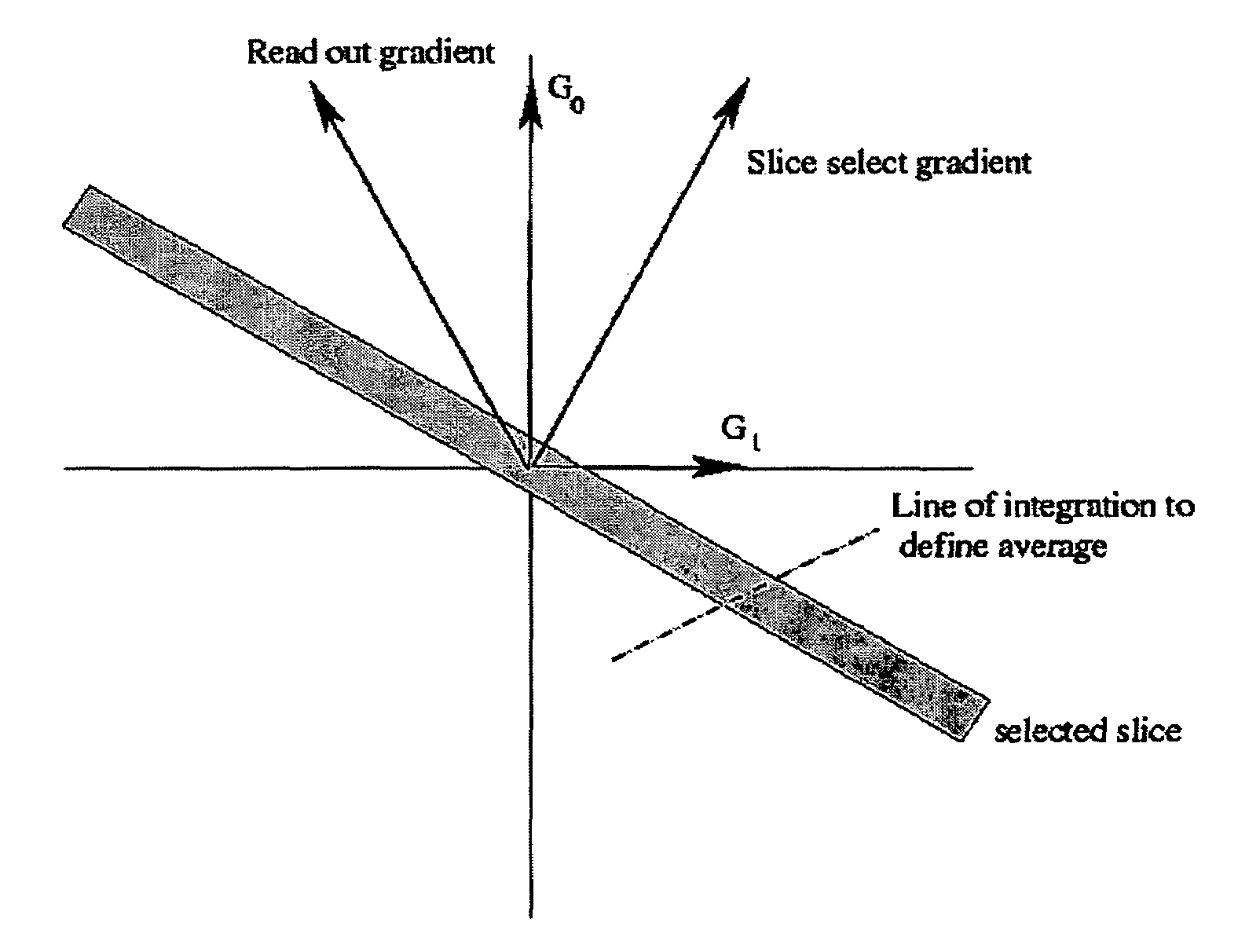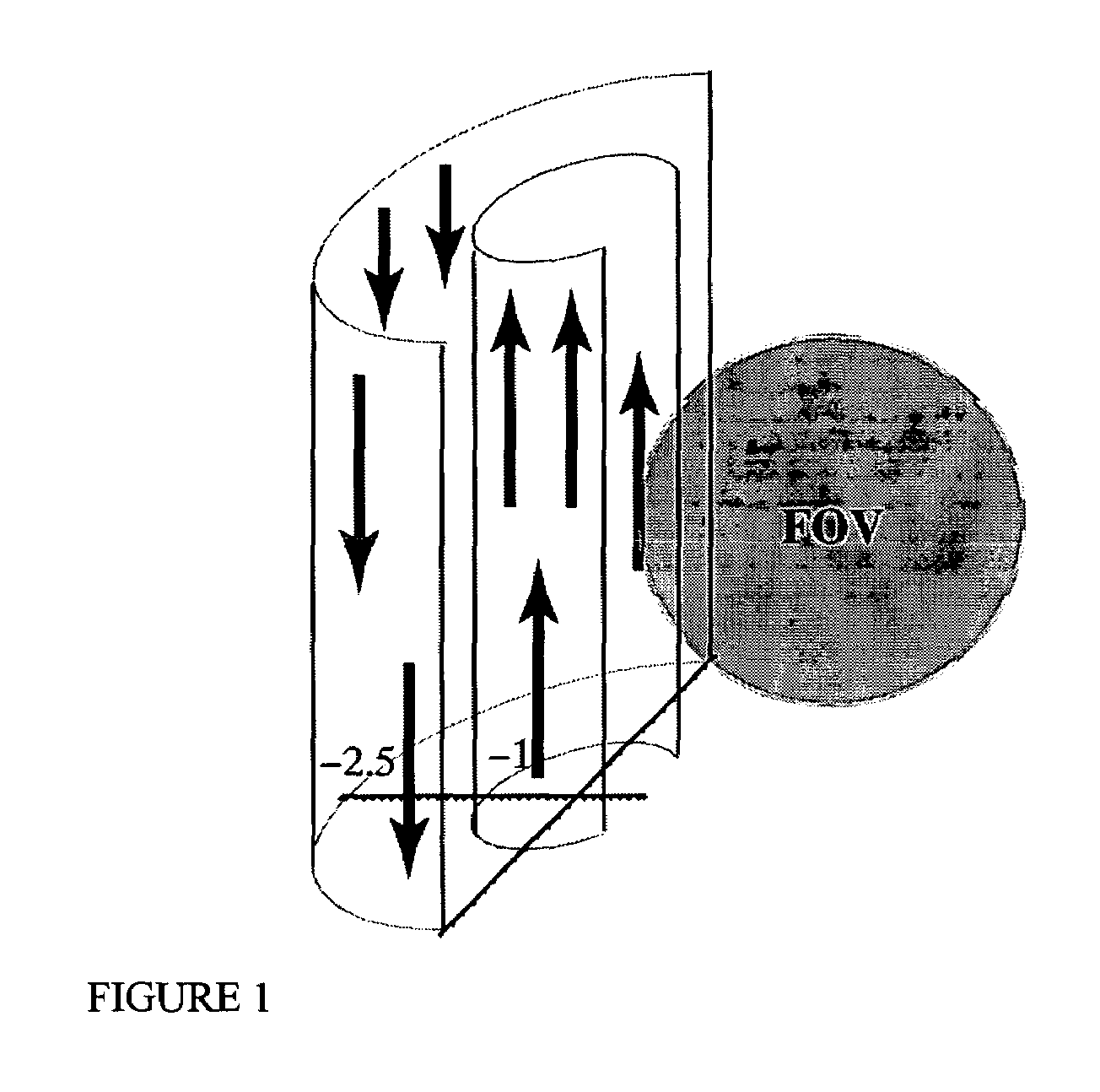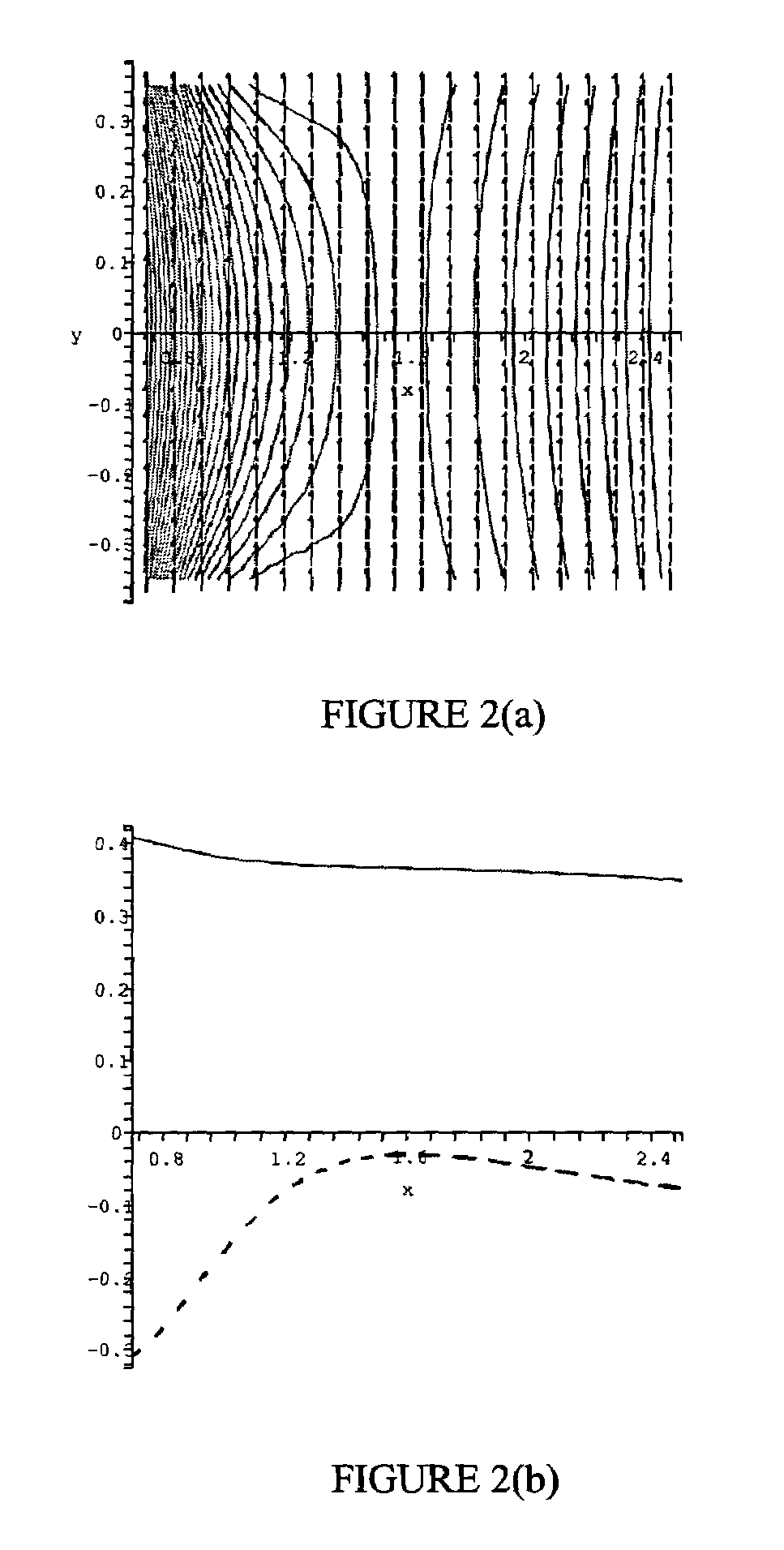Methods and apparatus for magnetic resonance imaging in inhomogeneous fields
a magnetic resonance imaging and inhomogeneous field technology, applied in the direction of reradiation, measurement using nmr, instruments, etc., can solve the problems of large power expenditure, inability to design the arrangement of coils, time-consuming and sar-intensive in vivo applications, etc., and achieve the effect of convenient measuremen
- Summary
- Abstract
- Description
- Claims
- Application Information
AI Technical Summary
Problems solved by technology
Method used
Image
Examples
first embodiment
[0067]In this first embodiment, the problem of imaging with an inhomogeneous background field without critical points is considered. A simplified model, with a background field, B0(x,y,z), of the form:
B0(x,y,z)=(b0−Gz){circumflex over (z)} (7)
is considered for z∈[−zmax,zmax]. While G / b0 may be large, per unit distance, the field of view is constrained so that b0±Gzmax is also assumed to be large. This means that B0 is large within the field of view, and therefore, slowly varying perturbing fields, orthogonal to B0, can safely be ignored. There are many possibilities for the placement of coils to generate the gradients and RF-pulses needed to do imaging. In some circumstances, these coils could be placed around the sample, in other cases they could be placed on one side of the sample. For a preliminary analysis, it is assumed that the gradient in |B0| is parallel to the direction of B0. This simplifies the discussion, a little, but is not necessary to do the analysis. A similar anal...
second embodiment
[0088]A second embodiment using a 2-dimensional imaging protocol will now be described. In this case, the permanent gradient is employed, along with a field of the form Gss=η1sG1+η2sG2, to define the slice selection direction, and a field transverse to this direction, Gre as the read out gradient. A third field of the form Gph=λ(η1pG1+η2pG2) is used as a phase encoding gradient. To describe the invention, a simple case is first considered wherein all of the gradients are linearly varying magnetic fields. As usual, it is assumed that the background field B0 is sufficiently strong throughout D that components of fields orthogonal to B0 have a very small effect on the measurements and can safely be ignored.
Analysis in the Linear Case
[0089]Let us suppose that B00=(0,0,b0) and let:
B0=(0,0,b0)+(*,*,gzz)=B00+G0
G1=(*,*,x) and G2=(*,*,y) (22)
Here * is used to denote negligibly small field components orthogonal to (0,0,b0). The permanent field gradient is of the form:
Gz=(0,0,gz), (23)
and we...
PUM
 Login to View More
Login to View More Abstract
Description
Claims
Application Information
 Login to View More
Login to View More - R&D
- Intellectual Property
- Life Sciences
- Materials
- Tech Scout
- Unparalleled Data Quality
- Higher Quality Content
- 60% Fewer Hallucinations
Browse by: Latest US Patents, China's latest patents, Technical Efficacy Thesaurus, Application Domain, Technology Topic, Popular Technical Reports.
© 2025 PatSnap. All rights reserved.Legal|Privacy policy|Modern Slavery Act Transparency Statement|Sitemap|About US| Contact US: help@patsnap.com



